In this article, we explain in detail what pH is, how to measure it and how to act to lower or raise it. pH plays a crucial role in maintaining healthy, balanced water in your pool. It varies according to a number of factors, so you need to check it regularly.
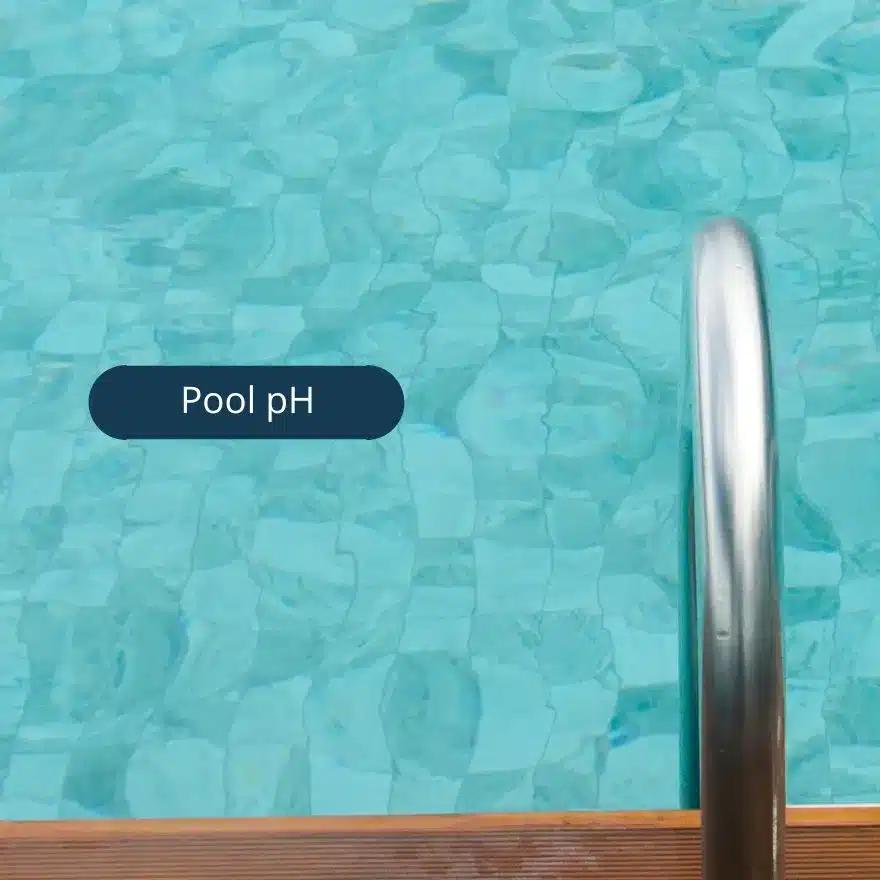
The pH is a measure of the acidity of water, indicating the concentration of hydrogen ions. The pH scale ranges from 0 to 14. A value of 7 is considered neutral, and water below 7 is acidic. Above 7, it is alkaline.
The pH balance in your pool or spa is of paramount importance because of its impact on pool disinfection. The pH balance also influences the disinfectant's ability to effectively kill bacteria and harmful organisms in the water. The correct pH ensures that the disinfectant can work optimally and eliminate unwanted contaminants. This helps maintain safe, healthy water for bathers, reducing the risk of infection or illness.
Another aspect to consider is the effectiveness of complementary products such as algaecides or flocculants, which help to prevent algae growth and maintain clear water. These products work best in an environment with a balanced pH, maximising their beneficial effects.
The recommended pH differs according to your disinfection method:
• For chlorine disinfection, the ideal pH is between 6.9 and 7.4
For bromine or salt disinfection, the ideal pH is between 7.5 and 7.8.
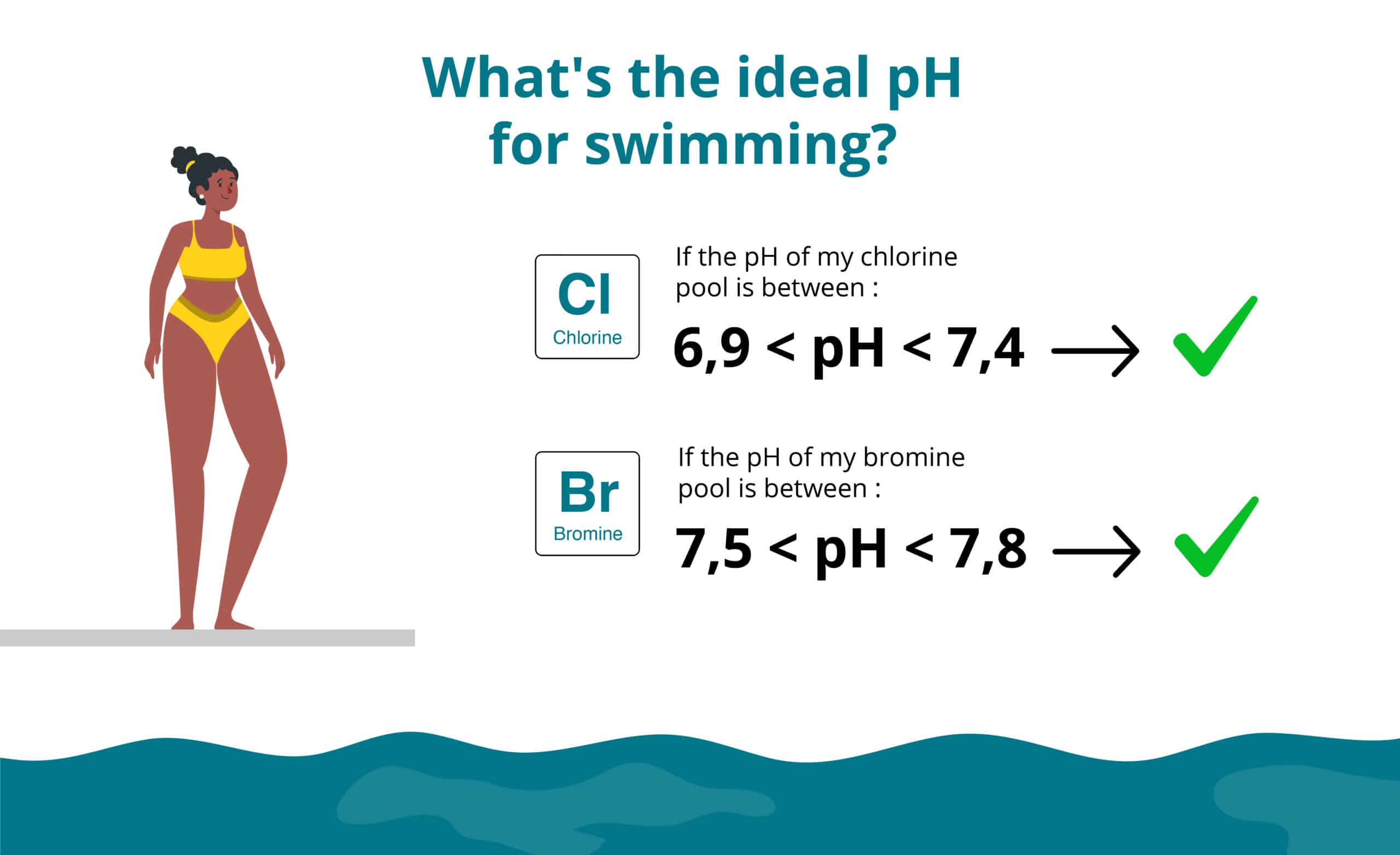
Rainfall, outside temperature, use of the pool (frequency and number of bathers) and the dosage of treatment products all have an effect on the pH of the water.
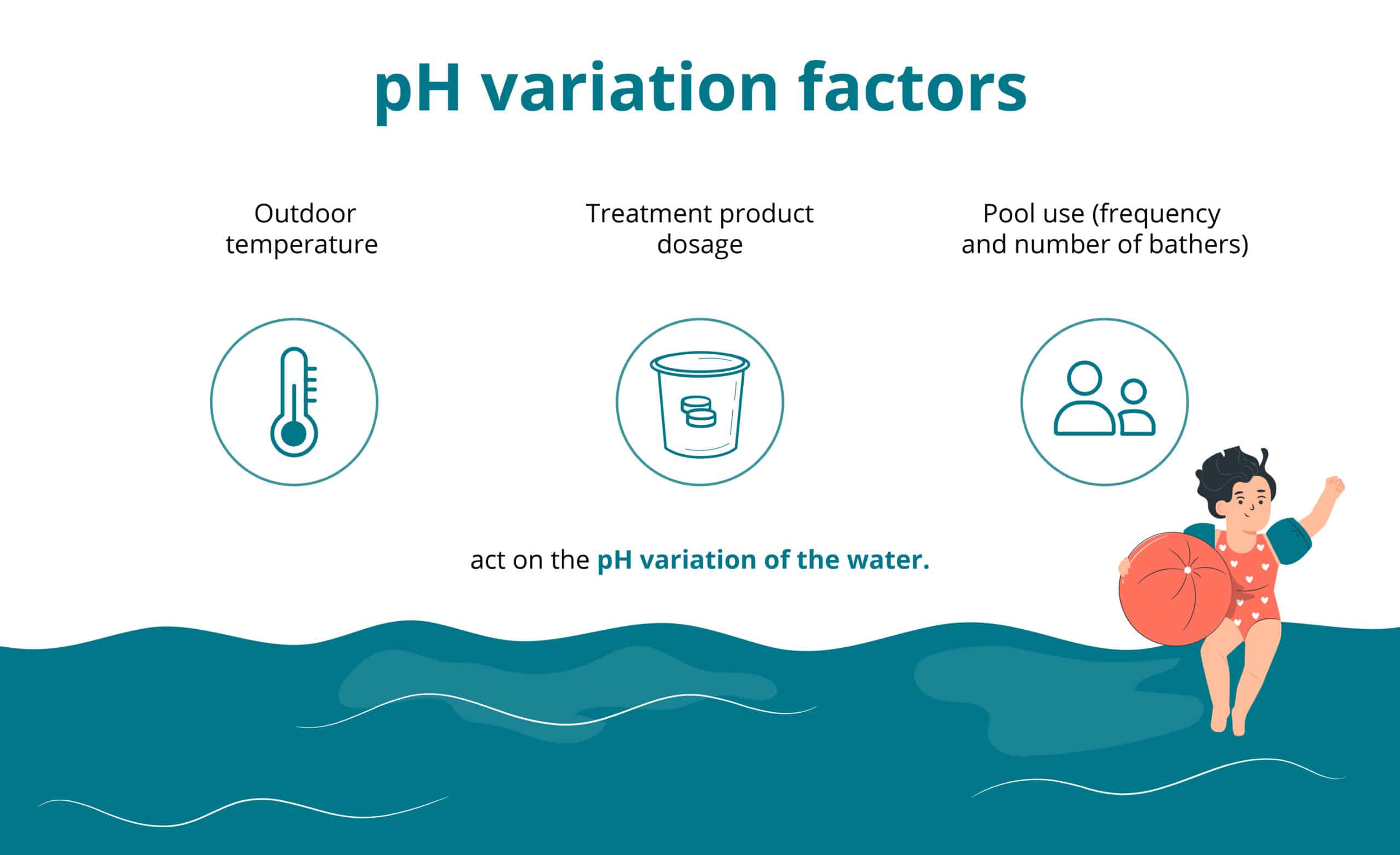
This question is often asked by pool owners. To answer this question, you should know that pH evolves over the course of the day in two distinct cycles.
Firstly, this evolution is due to the alternation of day and night, which is explained by the action of light and photosynthesis. Thus, in the early morning, pH tends to be low. As the day progresses, its value increases, reaching a maximum in the evening. At night, the pH drops again when photosynthesis stops due to lack of light.
Secondly, as bathers frequent the pool and the water temperature rises, the pH also changes as a result of body pollution. The water then becomes more acidic.
So pH variability is perfectly natural. A variation between 0.1 to 0.5 is considered normal. There's no need to treat your pool water to correct it. Beyond 0.5 on any given day, it becomes necessary to intervene and test other water parameters (tH, TAC) to understand what's going on and treat the water.
To conclude, we recommend that you establish a routine for measuring the pH of your pool. It's up to you to choose a time of day - morning or evening - when there are no bathers, in order to obtain comparable results from one test to the next. This routine is also recommended for testing all water parameters.
An incorrect pH can compromise the effectiveness of disinfectant products such as chlorine or bromine. It can also irritate bathers' skin and eyes, change the colour of the water and lead to the growth of algae.
A pH that is too high reduces the effectiveness of the chlorine, requiring more product to keep the water clean and bacteria-free.
A pH that is too low can lead to over-chlorination and make the water uncomfortable for bathers.
High pH can be caused by a number of factors: high pH in mains water, frequent bathing or over-consumption of pH+.
Low pH can be caused by a number of factors, such as rain, pollution, the quality of the water in your area, or incorrect pH- dosing.
A low pH can also have harmful consequences for bathing quality and equipment. It can lead to corrosion of equipment, deterioration of pool walls, excessive use of disinfectant and irritation of bathers' eyes and skin.
To measure the pH of your pool, you can use pH test strips. If you choose this measuring system, we recommend that you read the instructions carefully, as a wrong test can induce erroneous results and cause you to consume chemicals unnecessarily.
There are also electronic pH testers also known as pH meters which transmit information to a digital display. Very simple to use, simply dip the probe manually into the pool water to measure the pH of your pond water. However, you need to calibrate them regularly and change the batteries.
To save time and get more reliable and frequent data than test strips, use a connected pH tester that automatically takes hourly measurements. What's more, smart water analyzers measure many of your pool's parameters, including temperature, pH, ORP-redox (water disinfection) and TDS. Measurements of your pH and other parameters are sent to you at regular intervals, making it easy to manage your pool's water parameters. These connected analyzers also send you recommendations to help you maintain your pool, with the right product, for example.
To find out more about the different pH measuring instruments on the market, you can read this comparative of pH testers.
From the moment you re-open your pool in spring , you need to measure the pH regularly, i.e. at least once a week. Of course, you'll need to do this more frequently, depending on how often you swim, the number of bathers, and the weather. Indeed, weather modifies water quality and in particular its pH.
During the summer season, ,pH should be measured at least twice a week. Once again, this is not a hard and fast rule, as it depends not only on how you use your pool, but also on the quality of water filtration. Remember that water temperature is one of the factors affecting pH. In other words, the warmer the water, the more it degrades, and the more you need to monitor water parameters.
When winterizing your pool, pH measurement should be taken if you've opted for active winterization. In this case, check the pH once a month. Passive wintering, on the other hand, does not require testing of pH or other parameters, as your swimming pool is at a standstill.
If your pool's pH is above 7.5 (chlorine treatment) or 7.8 (bromine), here's how to lower it.
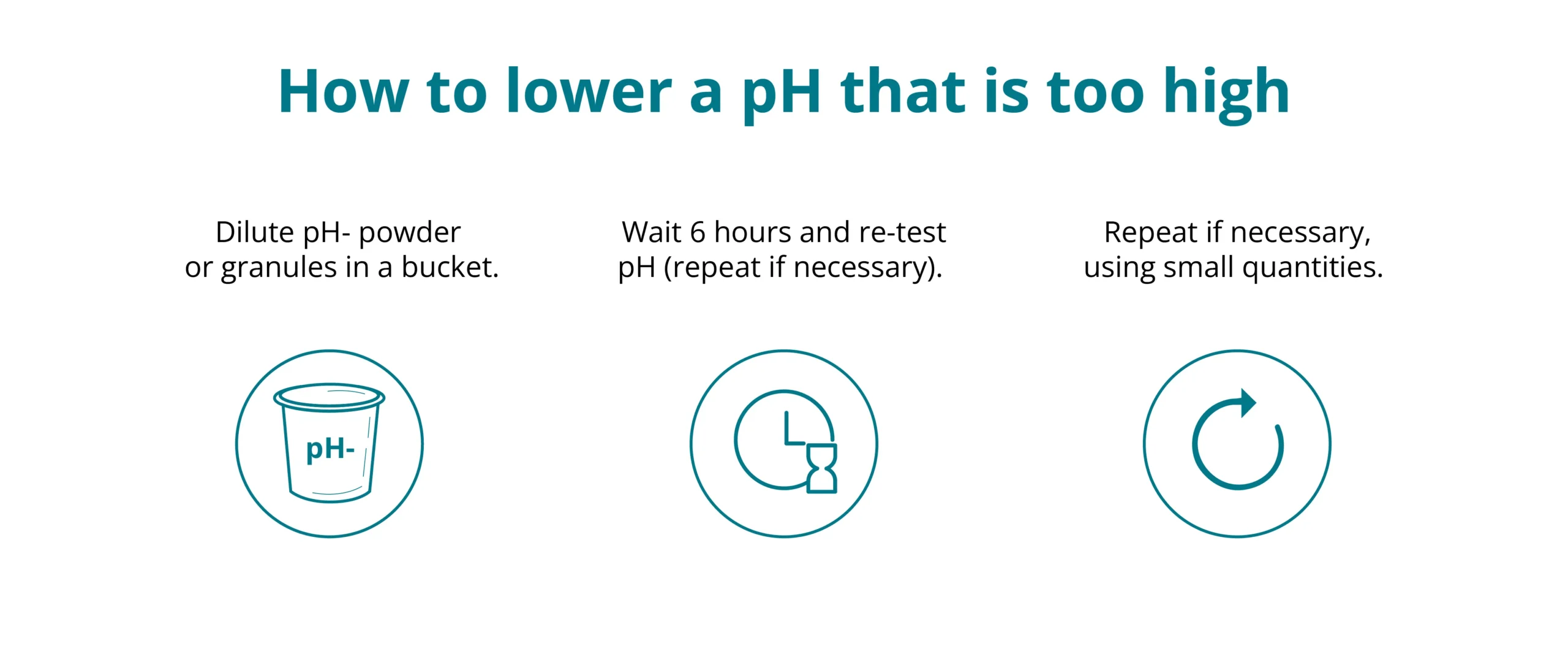
First, you'll need to add a pH- product containing an acid, such as hydrochloric acid or sulfuric acid. Next, dissolve the chemical in a bucket of pool water before adding it to the water in small quantities. This will prevent damage to pool surfaces.
Secondly, activate a filtration cycle, then wait a few hours (according to the manufacturer's instructions) to allow the pH to stabilize. Finally, retest the pH to check that it is within the target range. If the pH is still too high, repeat the process, adding smaller amounts of ph- until the desired value is reached.
Here's what to do if the pH is too acidic (below 7.2):
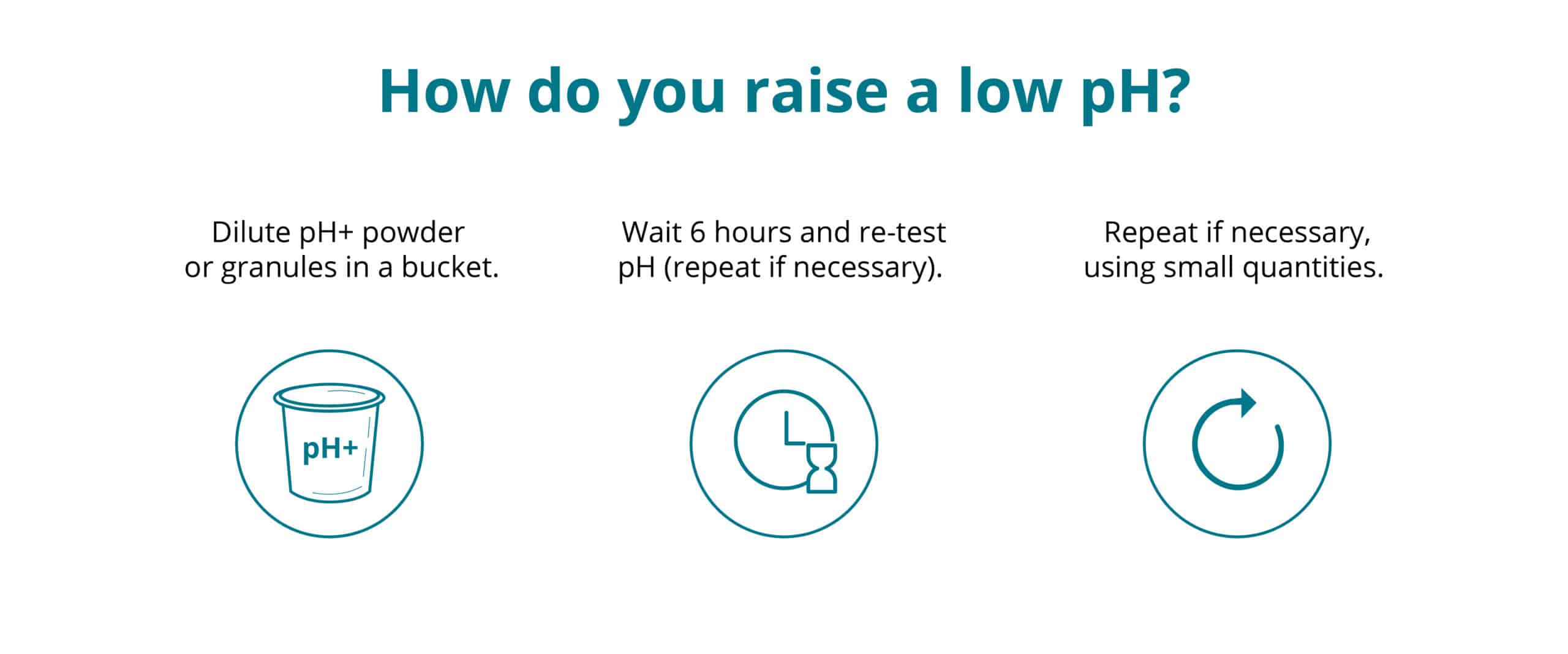
Begin by adding pH+. This product contains an alkalizing agent such as sodium bicarbonate or sodium carbonate. Follow the manufacturer's instructions or your ICO's recommendation to determine the appropriate amount to add, depending on the size of your pool. Secondly, dissolve and mix the chemical evenly in a bucket of pool water before pouring it into the pool. This is necessary to protect your pool's linings, but also to avoid unbalancing your pool's other parameters. Next, filter your pool water and wait at least 6 hours to retest the pH.
• If the pH is still not within the target range, you can repeat the process by adding smaller quantities of the alkalising agent, testing regularly to avoid exceeding the desired pH.
Be sure to follow the manufacturer's instructions carefully regarding quantities to be used, and wear protective equipment such as gloves and safety glasses when handling chemicals. Safety is paramount when handling chemicals. If you have any doubts or are having difficulty adjusting your pool's pH, don't hesitate to consult a pool care professional for advice specific to your situation.
If the pH of the water does not change after the addition of pH - or +, this may mean that your water is over-buffered: it is the alkalinity level (TAC) that is too high and prevents the pH from regulating. The TAC should be between 100 and 200 mg/liter (depending on the treatment used in your spa).If you find yourself in this situation, you need to resolve the TAC problem to restore a balanced pH by activating a full filtration cycle. Sodium bisulfate can also be added. You should avoid swimming for 48 hours if you use this product.
pH is one of the most important parameters for maintaining clear, healthy water. A pH that is too acidic or too basic can damage equipment. So it's important to know the factors that cause pH variations, so as to anticipate them, or to recognize the distinct signs, such as eye irritation or skin discomfort. This is undoubtedly the most important parameter for pool owners to monitor on a regular basis. In conclusion, it's imperative to equip yourself with a high-performance, reliable and easy-to-use pH tester.
| Cookie | Duration | Description |
|---|---|---|
| cookielawinfo-checkbox-analytics | 11 months | This cookie is set by GDPR Cookie Consent plugin. The cookie is used to store the user consent for the cookies in the category "Analytics". |
| cookielawinfo-checkbox-functional | 11 months | The cookie is set by GDPR cookie consent to record the user consent for the cookies in the category "Functional". |
| cookielawinfo-checkbox-necessary | 11 months | This cookie is set by GDPR Cookie Consent plugin. The cookies is used to store the user consent for the cookies in the category "Necessary". |
| cookielawinfo-checkbox-others | 11 months | This cookie is set by GDPR Cookie Consent plugin. The cookie is used to store the user consent for the cookies in the category "Other. |
| cookielawinfo-checkbox-performance | 11 months | This cookie is set by GDPR Cookie Consent plugin. The cookie is used to store the user consent for the cookies in the category "Performance". |
| viewed_cookie_policy | 11 months | The cookie is set by the GDPR Cookie Consent plugin and is used to store whether or not user has consented to the use of cookies. It does not store any personal data. |